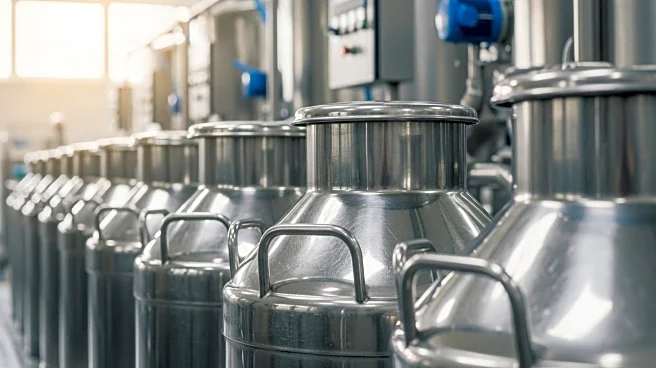What's Happening?
The U.S. dairy industry is experiencing a significant increase in milk production, driven by factors such as inexpensive feed, increased efficiency, and high beef prices. According to the USDA's August Milk Production report, the top 24 milk-producing states produced 18.8 billion pounds of milk in July, a 3.5% increase from the previous year. The average milk production per cow also rose, contributing to the overall increase. This surge in production has led to a decline in Class III milk futures, reaching new low-price levels for the year. The current herd size stands at 9.04 million milk cows, an increase from both the previous month and year.
Why It's Important?
The increase in milk production and subsequent drop in milk futures prices highlight the cyclical nature of the dairy market, where high production can lead to lower prices. This situation poses challenges for dairy producers, who may feel pressured to increase production to remain competitive, further exacerbating the oversupply issue. The current market conditions may force producers to reevaluate their strategies to manage risk and ensure profitability. The situation underscores the importance of strategic marketing and risk management in the agricultural sector, as producers navigate fluctuating market conditions.
What's Next?
Dairy producers are encouraged to develop strategic marketing approaches to manage risk and adapt to the current market conditions. This may involve exploring various strategies and tools to determine the best fit for their operations. Producers are advised to work with professionals to identify suitable strategies and make informed decisions, rather than reacting emotionally to market fluctuations. The industry may see further adjustments in production levels if prices continue to decline, potentially reaching a point where it is no longer profitable to increase production.











